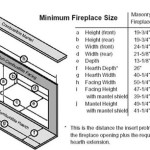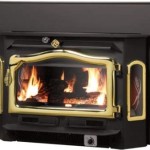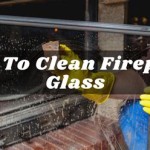Understanding High-Efficiency Wood Burning Fireplaces
Wood-burning fireplaces have long been a source of warmth and ambiance in homes. However, traditional fireplaces are notoriously inefficient, losing a significant portion of their heat up the chimney. High-efficiency wood-burning fireplaces represent a significant advancement in fireplace technology, designed to maximize heat output, minimize emissions, and provide a more sustainable and cost-effective heating solution. This article explores the key principles, benefits, and considerations associated with high-efficiency wood-burning fireplaces.
The core difference between traditional and high-efficiency fireplaces lies in their combustion process and heat retention capabilities. Traditional fireplaces often suffer from incomplete combustion, resulting in unburned gases and particulates escaping into the atmosphere. They also tend to draw significant amounts of heated room air up the chimney, contributing to heat loss. High-efficiency models, on the other hand, employ advanced technologies to achieve more complete combustion and retain a greater percentage of the generated heat within the living space.
The efficiency of a wood-burning fireplace is typically measured by its heat output relative to the amount of wood consumed. Traditional fireplaces might have efficiencies as low as 10-20%, meaning that only a small fraction of the wood's energy is actually converted into usable heat. High-efficiency models, however, can achieve efficiencies of 70% or higher, representing a substantial improvement in energy utilization and a reduction in fuel consumption.
Key Point 1: Advanced Combustion Technology
The enhanced efficiency of modern wood-burning fireplaces is primarily attributable to improvements in combustion technology. These fireplaces are designed to create a hotter, cleaner, and more complete burn, minimizing the release of smoke and pollutants. Several key features contribute to this improved combustion:
Secondary Combustion Systems: Many high-efficiency fireplaces incorporate a secondary combustion chamber. This chamber is designed to re-burn the unburned gases and particulates that would otherwise escape up the chimney. The secondary combustion process typically involves injecting pre-heated air into the firebox, which ignites these gases, further reducing emissions and increasing heat output. The presence of a secondary combustion system is a defining characteristic of a high-efficiency wood-burning fireplace.
Catalytic Combusters: Some models utilize a catalytic combustor, a device coated with a catalyst that promotes the oxidation of unburned gases at a lower temperature. As the exhaust gases pass through the combustor, they are exposed to the catalyst, which facilitates the conversion of carbon monoxide and other pollutants into carbon dioxide and water vapor. Catalytic combustors significantly reduce emissions, but they require periodic maintenance and replacement.
Air Injection Systems: Precise air injection systems are crucial for achieving complete combustion. These systems deliver preheated air to specific areas of the firebox, ensuring that the fuel burns efficiently and cleanly. The controlled delivery of air also helps to regulate the burn rate and maintain a consistent heat output. The location and volume of air injected is carefully designed to optimize the combustion process within the firebox.
Sealed Fireboxes: High-efficiency fireplaces typically feature sealed fireboxes, which prevent uncontrolled air leakage and ensure that the combustion process is properly regulated. A sealed firebox also helps to minimize drafts and maintain a more consistent temperature within the room.
The combination of these features results in a significantly cleaner and more efficient burn, reducing emissions and maximizing heat output. The ability to effectively control the combustion process is paramount to achieving high efficiency and minimizing environmental impact.
Key Point 2: Heat Retention and Distribution
In addition to improved combustion, high-efficiency fireplaces are also designed to retain and distribute heat more effectively. Traditional fireplaces often lose a significant amount of heat up the chimney, negating much of the warmth they produce. Modern fireplaces incorporate features that minimize heat loss and maximize the transfer of heat into the living space. These features include:
Heavy Firebox Construction: Constructed with materials such as cast iron or steel, the firebox of a high-efficiency fireplace is designed to absorb and radiate heat. These materials have high thermal mass, meaning they can store a significant amount of heat and release it slowly over time. This radiant heat provides a comfortable and consistent warmth throughout the room.
Baffling Systems: Baffles are internal structures within the fireplace that redirect the flow of hot gases, forcing them to travel a longer path before exiting through the chimney. This increases the amount of time the gases are in contact with the firebox walls, allowing more heat to be transferred to the room. Baffles also reduce the velocity of the exhaust gases, further minimizing heat loss.
Convection Systems: Many high-efficiency fireplaces incorporate convection systems that circulate air around the firebox, warming it and distributing it into the room. These systems can be passive, relying on natural convection currents, or active, utilizing a fan to force air circulation. Convection systems help to distribute heat more evenly and efficiently throughout the living space.
Insulated Chimney Systems: High-efficiency fireplaces often require insulated chimney systems to prevent heat loss and condensation. Insulated chimneys help to maintain a consistent flue temperature, which is essential for proper draft and efficient combustion. They also reduce the risk of creosote buildup, a flammable substance that can pose a fire hazard.
These features work together to ensure that a greater percentage of the heat generated by the fire is retained within the living space, rather than being lost up the chimney. This improved heat retention translates into lower fuel consumption and greater overall efficiency.
Key Point 3: Environmental and Economic Considerations
The benefits of high-efficiency wood-burning fireplaces extend beyond mere energy savings. They also offer significant environmental and economic advantages. The cleaner burning and improved efficiency of these fireplaces contribute to reduced air pollution and lower heating costs.
Reduced Emissions: High-efficiency fireplaces produce significantly fewer emissions than traditional fireplaces. The advanced combustion technology employed in these fireplaces minimizes the release of smoke, particulate matter, and other pollutants into the atmosphere. This can have a positive impact on air quality, particularly in areas where wood-burning is common.
Sustainable Heating: Wood is a renewable resource, and when burned in a high-efficiency fireplace, it can be a sustainable source of heat. However, it is important to ensure that the wood is harvested responsibly and sustainably. Sourcing wood from well-managed forests helps to minimize the environmental impact of wood-burning.
Cost Savings: While the initial investment in a high-efficiency fireplace may be higher than that of a traditional fireplace, the long-term cost savings can be substantial. The improved efficiency of these fireplaces means that less wood is required to produce the same amount of heat, resulting in lower fuel costs. Over time, these savings can offset the initial investment and make a high-efficiency fireplace a more cost-effective heating solution.
Government Incentives: In some regions, government incentives may be available to encourage the purchase and installation of high-efficiency wood-burning fireplaces. These incentives can help to reduce the upfront cost and make these fireplaces more accessible to homeowners.
It's important to consider the overall environmental impact of wood-burning, even with high-efficiency models. Responsible wood sourcing, proper maintenance, and adherence to local regulations are crucial for minimizing emissions and maximizing the sustainability of this heating method. Furthermore, it's important to recognize that while high-efficiency wood-burning fireplaces are generally cleaner than traditional fireplaces, they still produce some emissions. Individuals with respiratory sensitivities should consider the potential impact on their health.
Selecting a high-efficiency wood-burning fireplace requires careful consideration of several factors, including the size of the space to be heated, the desired aesthetic, and the budget. Consulting with a qualified professional can help to ensure that the chosen fireplace is properly sized and installed for optimal performance and safety. Regular maintenance, including chimney cleaning and inspection, is also essential for maintaining the efficiency and safety of the fireplace.

Our S High Efficiency Fireplaces Valcourt

Our S High Efficiency Fireplaces Valcourt

Home Hearth High Effeciency Wood Fireplaces

Superior Wct6940ws High Efficiency Wood Fireplace Fine S Gas

Home Hearth High Effeciency Wood Fireplaces

The Best Wood Burning Fireplace Inserts Or Stoves Ecohome

Rsf Focus 320 Modern Wood Burning Fireplace Impressive Heating

Wood Burning Fireplaces Fireplace Installations

High Efficiency Wood Stove Epa Approved

High Efficiency Wood Fireplaces Maritime
Related Posts








